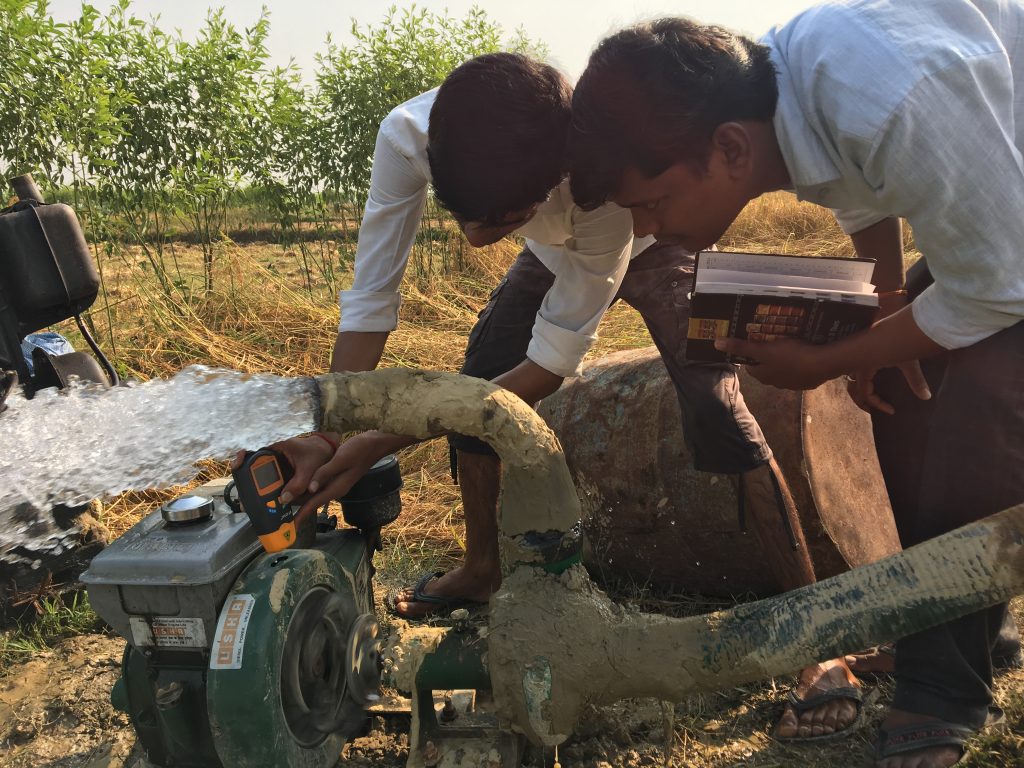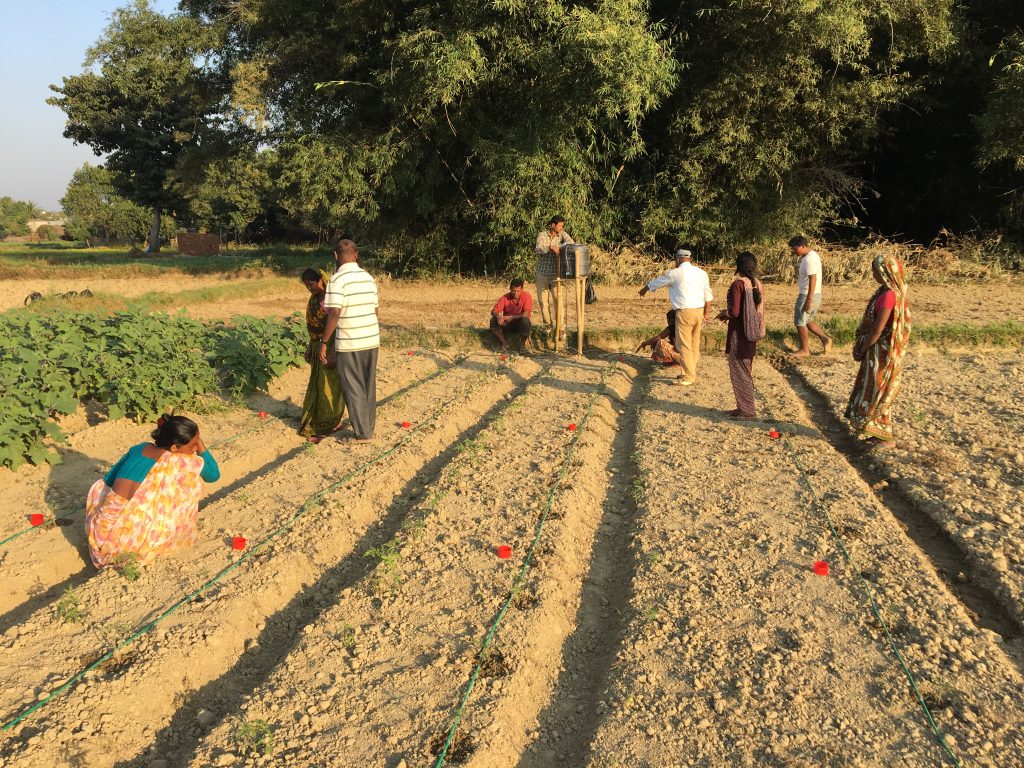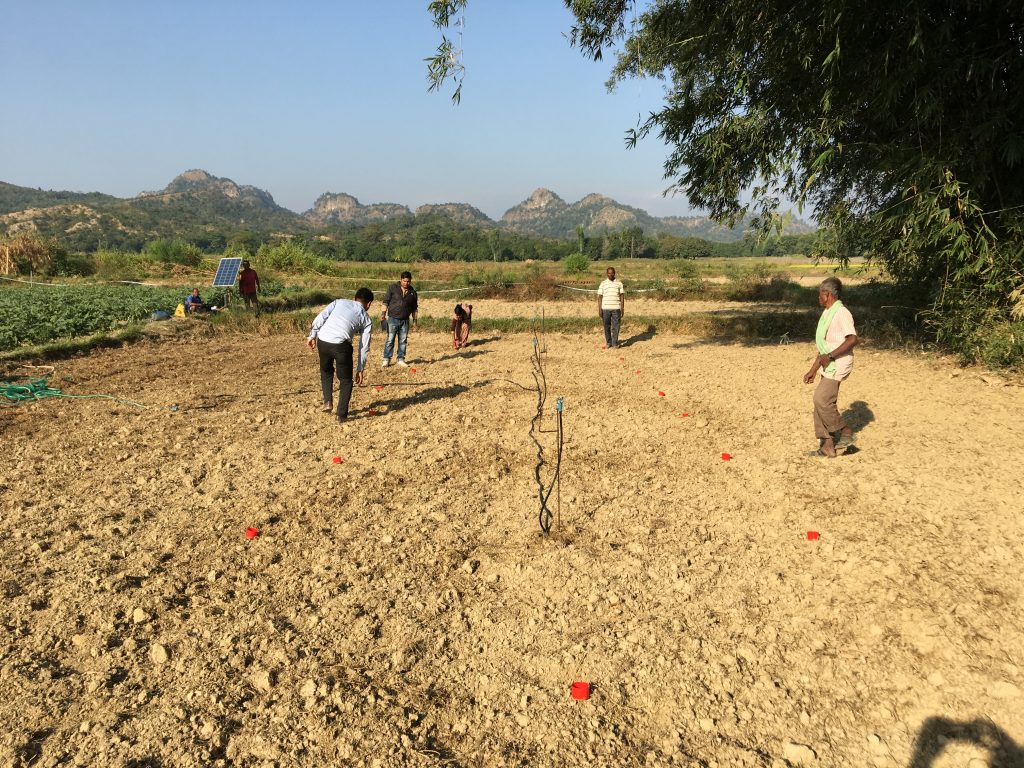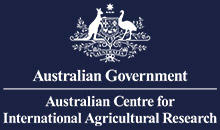In November the DSI4MTF team were involved in a number of irrigation infrastructure assessments. The assessments included solar pump efficiency, diesel and electric pump tests, drip and micro-irrigation uniformity and soil moisture assessments. This data collection is an important part of Project Activity 1.2 (to assess the efficiency of infrastructure), but was also used as a training and demonstration event for farmers, project staff and government representatives.
It is important to develop a data set of evaluations to show the true cost of pumping water over the range of duties (pressures and flows). The farmers can then compare the cost of pump rental with the true cost of pumping to help make decisions about capital investments in pumps. Similarly for irrigation systems (drip kits, micro sprinkler, ridge and furrow), assessing the performance of the system against the crop requirement is important for the farmer to make decision on how and when to schedule irrigations to best meet the crop demand.
At each of the study areas (Madhubani, Cooch Behar/Alipurduar, and Saptari, the DSI4MTF team spent time in the field collecting some simple measurements to build a data set.
The level of farmer interaction varied from site to site, but was encouraging to see the interest and the improvement in understanding. A key term (litres water pumped per litre of diesel used – Lwater/Ldiesel ) was introduced to help farmers visualise what they are paying for. It is well understood that a bigger pump will move more water (and will also use more diesel), but if we are to compare one pump with another, we cannot just talk about how many litres of diesel are burned per hour.

Drip irrigation assessments were undertaken in Saptari on a number of 10m x 10m drum kits systems. There were two different styles assessed with two very different results. The new style of preformed drip tape seemed to outperform the older style of drip tube in terms of uniformity of application, which is a key parameter in making sure that each plant is getting enough (but not too much) water.
The field staff will continue to undertake assessments and collect data. These will be written up as field case studies and will be shared here in the next month.








